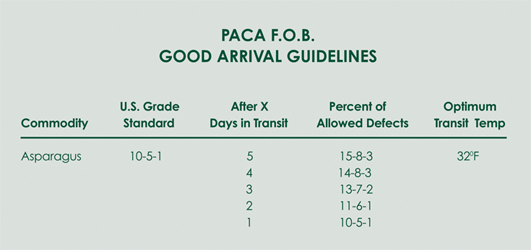Welcome to Blue Book!
Are you ready to join the thousands of companies who rely on Blue Book to drive smarter decisions? View our plans and get started today!
Still have questions? We’d love to show you what Blue Book can do for you. Drop us a line– we’ve been waiting for you.
So how long after arrival may an inspection certificate be considered timely, and therefore meaningful in assessing the condition of fresh produce? Although PACA precedent is not directly applicable to (or controlling of) transportation claims, decades of decisions related to the timeliness of USDA inspections provide an authoritative reference point when considering virtually the same issue in the context of a transportation claim. Suffice it to say that inspections taken more than two or three days after the arrival at the contract destination may be challenged as untimely, especially when highly perishable commodities like strawberries or asparagus are concerned.

Assuming the inspection certificate is timely, the next question is ‘how are the results to be interpreted?’ Taking asparagus, for example, how does the carrier know whether 15% average condition defects is considered abnormally deteriorated, five days after leaving shipping point? How about 10% decay?
This is where PACA’s Good Arrival Guidelines can be helpful within the context of a carrier claim. With a functional understanding of these guidelines carriers can more effectively evaluate or challenge the reasonableness of any alleged damages (see table, showing good arrival information for asparagus).
Oversimplifying somewhat, the key numbers are those under the Percent of Defects Allowed column. The first number represents (typically) average condition defects; the second number represents serious condition defects; and the third number represents very serious defects and/or decay.
If the product arrives and is inspected on the fourth day after leaving shipping point, and the percentage of defects on the inspection certificate do not exceed the relevant standard (14-8-3 in this example), then the carrier is in a good position to argue that the produce in question was not abnormally deteriorated and should have fetched market level returns. If, on the other hand, a timely inspection certificate shows defects far exceeding these standards, the carrier should not be surprised to see poor returns, dumped product, and substantial damages alleged.




